 Please note: this is part 2 of a multi-part blog on embodied consciousness. (see BMS 1: Consciousness)
Please note: this is part 2 of a multi-part blog on embodied consciousness. (see BMS 1: Consciousness)
Body-Mind-Spirit 1: Consciousness established a launchpad to dive deeper into our exploration of embodied states of consciousness. In part 2 we will link those states to measurable brainwave frequencies.
Measuring Brain Activity
There are several ways scientists study the functioning of the human brain. They can measure the electrical activity by placing electrodes on the surface of the scalp, using instruments like electroencephalography (EEG) or functional magnetic resonance imaging (fMRI), or they can measure electromagnetic activity in the field surrounding the head with magnetoencephalography (MEG) or a superconducting quantum interference device (SQUID MEG). Scientists have discovered that the brain doesn’t function in as logical and orderly a way as first assumed. Memory, for example, doesn’t have a precise location in the brain but instead seems to be enfolded holographically everywhere which has led many to theorize that the brain acts like a computer chip, relaying information from the energy field surrounding the body through its circuitry. You can think of it in this way, the electrical and chemical impulses move through the wiring of the nervous system which is governed by an electromagnetic matrix surrounding the brain and body. (We’ll explore this field phenomena more in the next few blogs.)
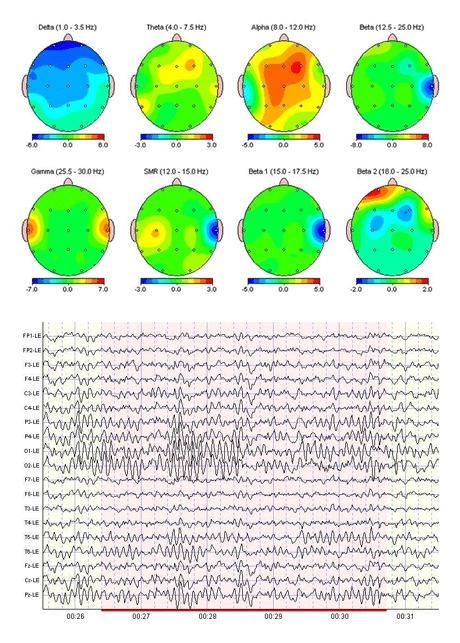 In imaging the brain, we can look at the areas that light up with activity. In normal states of consciousness, this can look like a lightning storm, first flashing in the eastern sky, then southwest, then right overhead. Similarly, brain impulses can activate areas in the right temporal lobe, occipital lobe then across the parietals on top. This tells us which areas of the brain are becoming active, superficial areas of the neocortex, the cerebellum, or deep structures like the thalamus or brain stem. It can also illustrate the level of activity, with cooler colors showing low activity, warmer all the way to red showing higher activity. Additionally, it can show the level of coherence (order) versus incoherence (disorder).
In imaging the brain, we can look at the areas that light up with activity. In normal states of consciousness, this can look like a lightning storm, first flashing in the eastern sky, then southwest, then right overhead. Similarly, brain impulses can activate areas in the right temporal lobe, occipital lobe then across the parietals on top. This tells us which areas of the brain are becoming active, superficial areas of the neocortex, the cerebellum, or deep structures like the thalamus or brain stem. It can also illustrate the level of activity, with cooler colors showing low activity, warmer all the way to red showing higher activity. Additionally, it can show the level of coherence (order) versus incoherence (disorder).
Alternatively, we can look at the neuro oscillation or brainwave frequencies which look like squiggly lines showing the state of consciousness from the unconscious, to conscious relaxed, activated, agitated, to various meditative states. This neuro oscillation is the area I’d like primarily to focus on here as frequency is the language the brain speaks. The speed of these oscillations generate a cascade of specific meurophyssiological responses and chemicals to be released throughout the body.
The third avenue for studying the brain, which may at first seem illogical, is by measuring the heart rate and heart rate variability with instruments such as an electrocardiogram (EKG or ECG). (we’ll look at this in detail in BMS 3: Coherence)
Neuro Oscillation
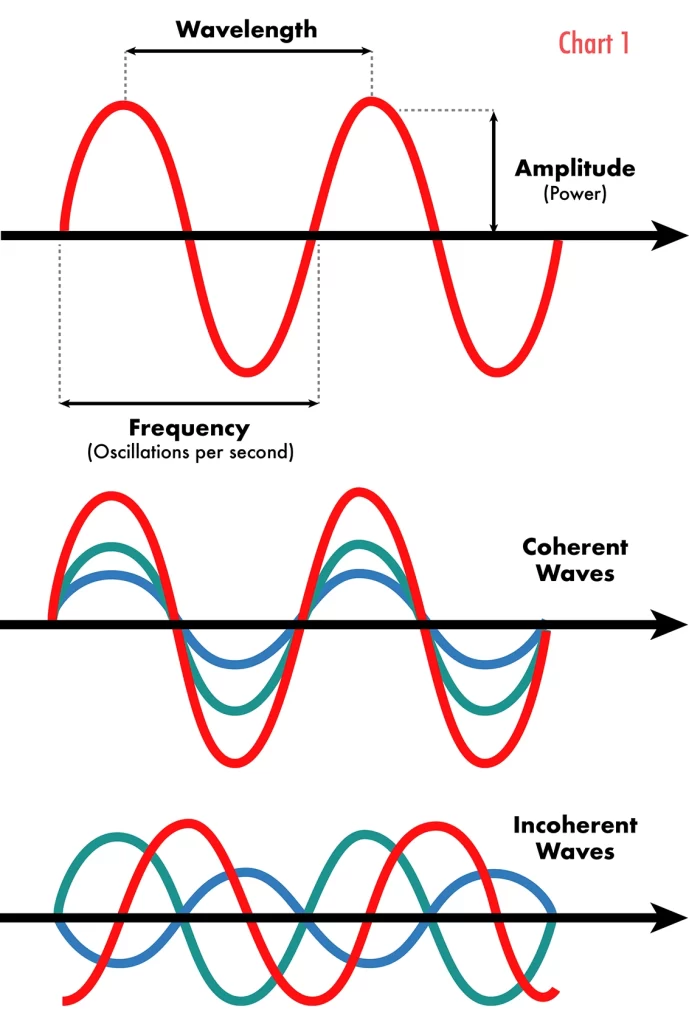 Scientists record brainwaves from electrodes placed in grid patterns across the scalp. The frequency of brainwaves can vary depending on the arousal level of the person. When a person is in deep sleep or meditation, where the rate of neuron firing is very low, the frequency will also be low. On the other hand, if the person is in an alert state, the frequency will be high. Irregularities in these brainwave patterns aren’t necessarily the cause of problems in the brain, but rather can indicate underlying issues present.
Scientists record brainwaves from electrodes placed in grid patterns across the scalp. The frequency of brainwaves can vary depending on the arousal level of the person. When a person is in deep sleep or meditation, where the rate of neuron firing is very low, the frequency will also be low. On the other hand, if the person is in an alert state, the frequency will be high. Irregularities in these brainwave patterns aren’t necessarily the cause of problems in the brain, but rather can indicate underlying issues present.
When measuring brainwaves on a graph, scientists measure the oscillations per second. Let’s say you’re holding a string stretched out between your hands. Now you start wiggling one end. This will create a waveform that oscillates up and down. One cycle of rising and falling string is one wave within that interval (your hands). Brainwaves are measured in cycles per second or Hertz (Hz), so 1 Hz has one peak and valley per second. If you count the peaks in the Theta brain state, it has between 3 and 8 peaks per second (3-8 Hz).
History
Cortical or Neuro Oscillations, aka Brainwaves, were discovered in the mid-1920s by Hans Berger with his invention of the Electroencephalograph (EEG). They were an enigma for years and remained controversial for more than a decade as their cellular basis was unknown. Neuro oscillations are measurable all throughout the central nervous system.
Researcher, Dr. Jeffrey D. Thompson states, “The normal range of brainwave frequency activity in the cortex neurons has traditionally been from 0.5 Hz Delta to 30.0 Hz Beta. Most of the early brainwave research was concerned with sleep studies. These studies established accepted brainwave nomenclature associating Beta activity with externally directed linear thinking mental activity, Alpha activity with internally directed non-linear mental activity, Theta with dreaming sleep, emotional elements, and experiences, and Delta with the deepest and most physically restorative portion of sleep.” We can see these four on a spectrum from full arousal to unconscious sleep, respectively.
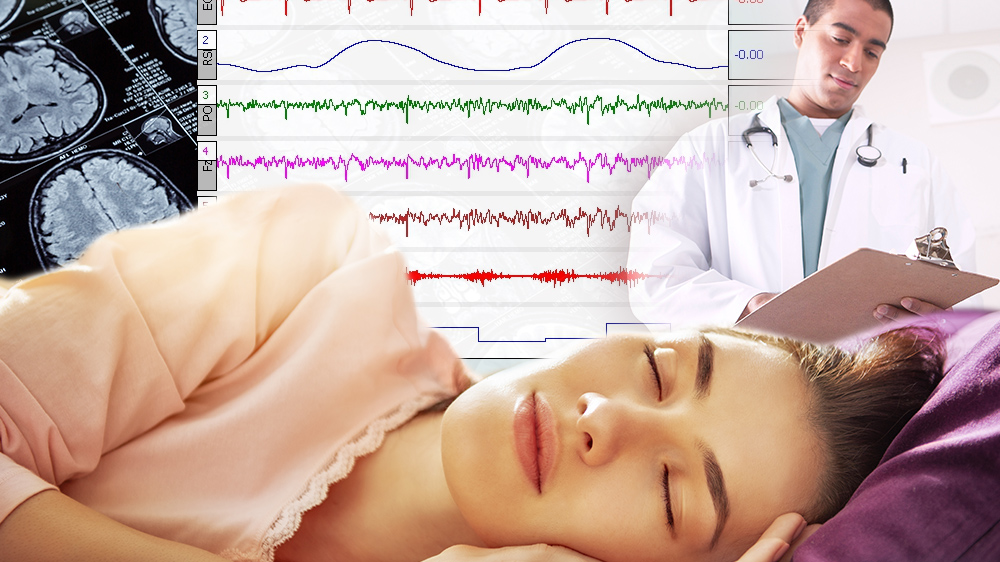 Early research only identified these 4-states: Beta, Alpha, Theta, and Delta, and mainly defined these relative to sleep states. It wasn’t until the mid-1960s that researchers studying the visual cortex of awake monkeys recorded the first Gamma waves.
Early research only identified these 4-states: Beta, Alpha, Theta, and Delta, and mainly defined these relative to sleep states. It wasn’t until the mid-1960s that researchers studying the visual cortex of awake monkeys recorded the first Gamma waves.
Today, some one hundred years after their discovery, research into waking and higher states of consciousness using EEG, qEEG, etc. remains relatively minimal. Much of the research centers on sleep, stress and stress reduction, performance, and neuro- and psychoemotional conditions like Alzheimer’s, schizophrenia, and ADD.
‘Normal’ conscious states tend to appear disorganized and chaotic. The waveforms are tense, jagged and erratic. Modern technological advances have enabled new research into coherent/organized states of consciousness using meditation, and light and sound entrainment. Only recently, while studying Tibetan monks in deep meditation have scientists mapped three new states: Hyper-Gamma, Lambda, and Epsilon, blowing open what was considered possible for human consciousness.
Hyper-Gamma, Lambda & Epsilon
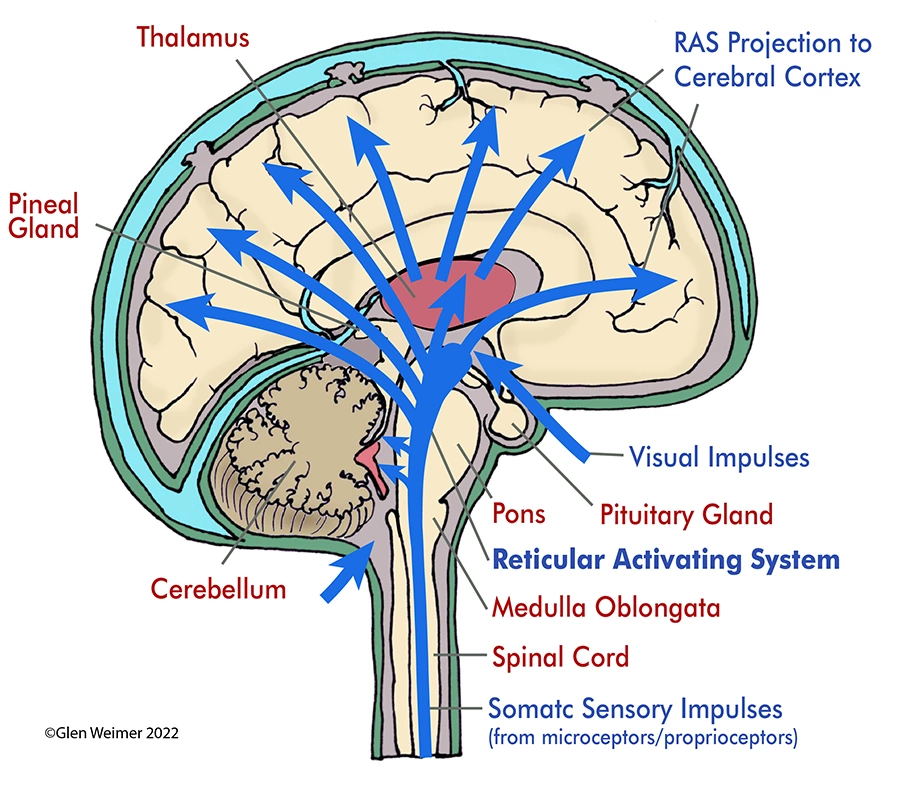 In studying participants during deep meditative states, the electrical activity between the right/left hemispheres of the brain tends to synchronize. This was first observed in Gamma where sweeping electrical impulses were recorded radiating in a pulsation of waves from the thalamus out to all parts of the brain at 40 cycles per second. (Slightly slower than hummingbirds wings of 50/sec).
In studying participants during deep meditative states, the electrical activity between the right/left hemispheres of the brain tends to synchronize. This was first observed in Gamma where sweeping electrical impulses were recorded radiating in a pulsation of waves from the thalamus out to all parts of the brain at 40 cycles per second. (Slightly slower than hummingbirds wings of 50/sec).
In his book Becoming Supernatural, Dr. Joe Dispenza describes it like this, “As the thalamic gate opens up, a lot of the creative energy that was stored in the body passes through the reticular activating system [part of the brainstem sustaining conscious arousal], of each thalamus, and the pineal gland. Then that energy is relayed to the neocortex producing gamma brainwaves.”
Different groups of independent EEG researchers studying HyperGamma, Lambda, and Epsilon brain rhythms describe them using the same terms, implying a common thread between all three, which is especially surprising since HyperGamma and Lambda are incredibly fast, while Epsilon is a near-flatline at the far opposite end of the frequency spectrum. They are all associated with a unique state of consciousness we find in advanced meditation adepts able to achieve superhuman levels of physical and mental control.
Researchers have discovered that if you zoom way in on the extremely slow Epsilon brainwave patterns, there are super fast micro-Hyper-Gamma/Lambda brainwaves hiding within. And when zooming way out, it appears that Hyper-Gamma/Lambda waves oscillate along a gently undulating Epsilon-like waveform. This may help explain why such radically different brain rhythms produce such similar states of consciousness.
Lambda
Lambda (100-200 Hz) are super high-frequency waves, substantially faster than the Gamma frequency range (36-44 Hz), and twice as fast the Hyper Gamma range (44-100 Hz). They are very rare and difficult to measure.
 Lambda waves are associated with master meditators, such as Tibetan monks, who can meditate outdoors high in the Himalayan mountains for hours without succumbing to the extreme cold temperatures. These monks demonstrate the ability to sit naked in sub-zero temperatures and melt the snow in a circle radiating feet around themselves by regulating their internal body temperature. The ‘Iceman’, Wim Hof, famous for cold-water swimming and controlled breathing techniques, like these monks, can meditate at extremely low temperatures.
Lambda waves are associated with master meditators, such as Tibetan monks, who can meditate outdoors high in the Himalayan mountains for hours without succumbing to the extreme cold temperatures. These monks demonstrate the ability to sit naked in sub-zero temperatures and melt the snow in a circle radiating feet around themselves by regulating their internal body temperature. The ‘Iceman’, Wim Hof, famous for cold-water swimming and controlled breathing techniques, like these monks, can meditate at extremely low temperatures.
Beyond simply deep meditation, Lambda is a state of complete oneness and wholeness. It is associated with the highest levels of true undifferentiated unity consciousness. Because it is a difficult state to achieve and focuses consciousness outside of spacetime and the physical world, very little is known or written about it, or in fact can be described. The same is true of Hyper-Gamma and Epsilon. Reaching Lamda is often associated with a moment of discovery and insight that is indescribable, a ‘eureka’ moment.
Hyper-Gamma
Similarly, scientists discovered high-amplitude frequencies, beyond the Gamma range (40-100 Hz), in highly-accomplished meditators during the practice of Metta or Loving-Kindness Meditation. Gamma patterns have been associated with full-brain integration, compassion, and singular focus. Consciousness researcher Dr. Jeffrey Thompson coined the term Hyper-Gamma (44-100 Hz) to describe brain activity far faster than Gamma. He correlated this state with extraordinary states of consciousness and spiritual development. Even today, many scientists working with these extreme states don’t yet distinguish the 3 outer-range frequencies as separate from either Gamma or Delta.
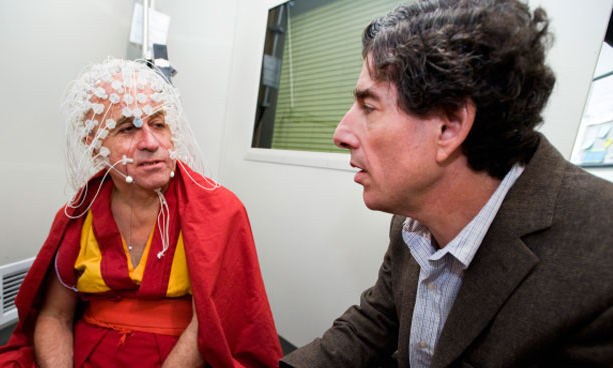 Gregg Braden describes the use of strong felt-sense emotions like gratitude, appreciation, and in particular compassion as the doorway to Gamma and Hyper-Gamma states. He explains that in Tibetan Buddhism, compassion means something very specific. Compassion is at the endpoint of a continuum beginning with sympathy, (acknowledging the pain of another); to empathy, (feeling the pain within yourself); to compassion, (moving beyond empathy and accepting suffering within yourself and others without judgment or attachment to the outcome while simultaneously holding open the possibility for a greater outcome).
Gregg Braden describes the use of strong felt-sense emotions like gratitude, appreciation, and in particular compassion as the doorway to Gamma and Hyper-Gamma states. He explains that in Tibetan Buddhism, compassion means something very specific. Compassion is at the endpoint of a continuum beginning with sympathy, (acknowledging the pain of another); to empathy, (feeling the pain within yourself); to compassion, (moving beyond empathy and accepting suffering within yourself and others without judgment or attachment to the outcome while simultaneously holding open the possibility for a greater outcome).
“In a 2004 study with the Dalai Lama’s monks, most advanced monks, each with 15 to 40 years of meditation practice, … Dr. Richard Davidson (pictured above) found some of the monks produced gamma wave activity more powerful and of higher amplitude than any documented case in history. The movement of the waves was also far better organized than the non-meditating test volunteers.
It was also shown that meditation could result in the redistribution of gray matter in the brain and prevent its loss. The loss of gray matter has an impact on many mental functions, such as the control of emotions, impulses, thoughts, and movements. This is because the caudate nucleus, which controls these functions and more, is situated within the gray matter.” ~ Tara MacIsaac
Gamma
Although Gamma waves (36-44 Hz) are crucial to understanding higher cognition, full-brain integration, and elevated emotional states, they were largely ignored until the mid-1960s. The development of digital EEGs and other recent tech advancements are what enabled scientists to identify these 4 most recent waves, Lambda, Hyper-Gamma, Gamma, and Epsilon. Prior to this, the technologies couldn’t measure these speeds or even characterize them.
 Individuals whose brains produce more Gamma waves experience higher levels of integrated, full-brain functioning, and greater peak cognitive ability, including concentration, intense focus, meditation, and memory recall. Gamma is also associated with intense feelings of inner peace and well-being. It is seen during REM (rapid eye movement) sleep when the whole brain is actively processing information. Additionally, it functions as the gateway to the aforementioned transcendental states, psychic perception, compassion, and unity consciousness.
Individuals whose brains produce more Gamma waves experience higher levels of integrated, full-brain functioning, and greater peak cognitive ability, including concentration, intense focus, meditation, and memory recall. Gamma is also associated with intense feelings of inner peace and well-being. It is seen during REM (rapid eye movement) sleep when the whole brain is actively processing information. Additionally, it functions as the gateway to the aforementioned transcendental states, psychic perception, compassion, and unity consciousness.
Studies in the early 1940s by researchers EW Dempsey and RS Morison concluded that individuals could intentionally change and even entrain their brainwave patterns through various external stimuli, like light and sound. Gamma entrainment through meditative practices and light or sound therapy may be useful for enhancing mental clarity, memory, creativity, and a sense of wellbeing. (See Entrainment below).
The health benefits of stimulating Gamma waves include attention to detail, and the ability to store and recall information. While Gamma deficiency is a hallmark of degenerative brain disorders, the impact of low gamma includes problems with perception, focus, and self-awareness, REM sleep, and an inability to meditate or relax. A greater decrease may make one prone to depression, overwhelm, and diminished impulse control.
Beta
Beta (12-36 Hz) is the state most of us are all too familiar with. It is generally regarded as a normal brain rhythm and is the dominant frequency present when we are awake with eyes open, alert, task-oriented, problem-solving, analyzing, making decisions, and navigating our external world.
Beta, brain activity can be chaotic or desynchronized. It usually presents with both hemispheres of the brain in symmetrical distribution but with predominantly frontal activity. There are 3 distinct subdivisions of Beta, High, Mid, and Low, ranging from what I would classify as dysregulated to co-regulated Sympathetic Nervous System (SNS) states, respectively.
 High Beta or Beta 3 (20-36 Hz) is associated with significant stress, anxiety, paranoia, high energy, and high arousal. If the body were a car this would be overdrive.
High Beta or Beta 3 (20-36 Hz) is associated with significant stress, anxiety, paranoia, high energy, and high arousal. If the body were a car this would be overdrive.
Mid Beta or Beta 2 (15-20 Hz) is alert, mentally, and physically active, but not agitated. Here’s where we are solving math problems, planning, and generally in high-performance mode.
Low Beta or Beta 1 (12–15 Hz) is the frequency that establishes sensorimotor rhythm (SMR), where the brain-body or feeling/thinking-acting communication happens. It is a state of quiet, focused, introverted concentration. Low SMR can signal a lack of attention and ADD-type issues.
We are never purely in one frequency, but rather continually shift between; possibly hanging out in one predominantly before transitioning to another. Consequently, the bottom of Low Beta shares characteristics with the top of High Alpha (as do all boundaries between states).
Alpha
Alpha (8-12 Hz) is our ‘flow state’. We associate it with being ‘in-the-zone’, fully immersed in our felt-sense of serene focus. It is a state of being simultaneously relaxed and present, in-the-moment. Alpha produces balanced awareness, positive attitude, creativity, and mindfulness. Alpha is the resting state of the brain, enabling calmness, alertness, and mental coordination. It increases serotonin production (psychoemotional and physical pain reduction) and is engaged for stress relief, visualization, and transcendental-style meditation
 Alpha waves light-up the posterior of the brain when we meditate, which corresponds to the flow state and calm focus. It is said that they are the most rhythmical, tying Alpha to body-consciousness and awareness being drawn into our inner experience rather than outer experience. I find it fascinating how body-consciousness gets us to instinctually move into positions and shapes that assist to achieve an unconscious goal. Think about leaning back in a chair with your fingers interlaced behind your head stimulating Alpha versus leaning forwards, scrunching up your face with the fingertips of both hands pressing into your forehead as you try to concentrate harder stimulating Beta.
Alpha waves light-up the posterior of the brain when we meditate, which corresponds to the flow state and calm focus. It is said that they are the most rhythmical, tying Alpha to body-consciousness and awareness being drawn into our inner experience rather than outer experience. I find it fascinating how body-consciousness gets us to instinctually move into positions and shapes that assist to achieve an unconscious goal. Think about leaning back in a chair with your fingers interlaced behind your head stimulating Alpha versus leaning forwards, scrunching up your face with the fingertips of both hands pressing into your forehead as you try to concentrate harder stimulating Beta.
In Michael Hutchison’s book Megabrain, he reports that Alpha produces a reduction in heart rate, blood pressure, and sweating, as well as optimized digestive functioning, a deeper relaxation of muscles, and an increase in the flow of oxygen to the brain — in short, a co-regulated Autonomic state enlisting both Ventral and Dorsal Vagal branches. Dr. Georgi Lozanov showed that subjects in Alpha learned up to five times the amount of information in less time per day and with greater long-term retention. Other researchers found that brain entrainment using Alpha and Theta frequencies aided with various mental health issues including depression and addiction recovery.
Harvard Medical School’s, Dr. Herbert Benson looked at high-level performers under intense pressure to understand which mechanisms were at work. He coined the term ‘relaxation response’ to explain how humans reverse the effects of stress while mentally and physically engaged. He found that an ability to access the relaxation or de-stress response, characterized by Alpha brainwaves, was beneficial to mind-body health. And not just when under stress, but at any time.
Theta
Theta (3-8 Hz) are slow brainwaves associated “with creativity, intuition, daydreaming, and fantasizing and is a repository for memories, emotions, and sensations. Waking Theta waves are strong during internal focus, meditation, prayer, and spiritual awareness. It also reflects the states between wakefulness and sleep and relates to the subconscious mind. It is not normally active in awake adults but is a dominant state in children up to 13 years old. It is also normal during sleep. Theta is believed to reflect activity from the limbic system and hippocampal regions of the inner/reptilian brain. …When the Theta rhythm appears to function normally it mediates and/or promotes adaptive, complex behaviors such as learning and memory. Under unusual emotional circumstances, such as stress or disease states, there may be an imbalance of three major transmitter systems, which results in aberrant behavior. Back to our car example, Theta would be considered 2nd gear. Not as slow as 1st gear (Delta) but still not very fast.” ~ NeuroHealth, The Science of Brainwaves
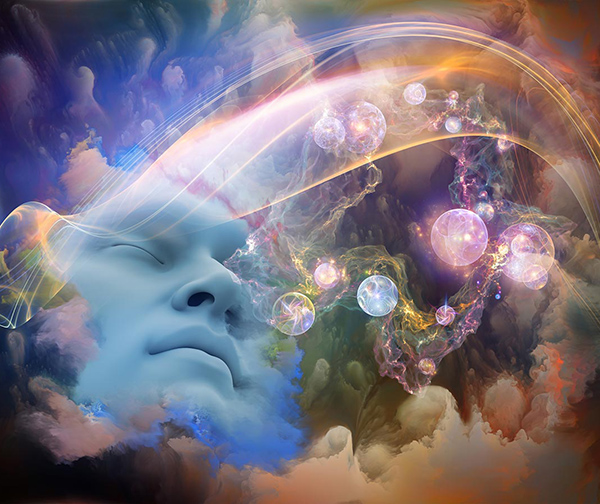 Theta is a drowsy state involved in the dreamlike fluidity of the hypnagogic and hypnopompic states moving into and out of sleep, light sleep, REM sleep, hypnosis, trance, daydreaming, and access to our gut feelings, intuition, and unconscious mind. It also increases the production of catecholamines, essential for learning. Its waves are usually regional within the brain, they may involve many lobes and can be lateral or diffuse across a broad area.
Theta is a drowsy state involved in the dreamlike fluidity of the hypnagogic and hypnopompic states moving into and out of sleep, light sleep, REM sleep, hypnosis, trance, daydreaming, and access to our gut feelings, intuition, and unconscious mind. It also increases the production of catecholamines, essential for learning. Its waves are usually regional within the brain, they may involve many lobes and can be lateral or diffuse across a broad area.
Delta
Delta (0.5-3 Hz), until recently was believed to only happen during deep dreamless sleep where the body repairs itself and energy is restored. Again, studies with meditators revealed that individuals could enter Delta with conscious awareness. It is seen in deep meditation, deep sleep, healing and growth, HGH, DHEA and melatonin release, cortisol reduction, and pain relief. When entered awake it is a deep trance-like state, with little to no body awareness, and a low level of arousal. All of our awareness is focused internally. Delta can grant us access to our deep unconscious and collective unconscious. An inadequate time in Delta during sleep will mean you wake still feeling groggy, drained, dragging, and unrested. Insufficient Delta hinders the body’s ability to repair tissue and heal, therefore it hugely impacts our system’s overall health.
One of the things I find most fascinating is that Delta is the dominant brainwave rhythm in infants up to a year old. They spend much of their time asleep and then remain in ‘high-volume’ Delta when awake. Individuals with Attention Deficit Disorder (ADD) have a difficult time shifting out of Delta in order to focus on the task at hand. This causes a feeling of distraction as the brain is still internally focused.
Epsilon
 Epsilon (0.0-0.5 Hz), as described at the very beginning of this blog, is one of the rarest and least-known states. It is achieved only in extremely deep meditation causing an apparent cessation of all body rhythms. It is a state of near-suspended animation, there is no discernable heartbeat, pulse, or brain activity.
Epsilon (0.0-0.5 Hz), as described at the very beginning of this blog, is one of the rarest and least-known states. It is achieved only in extremely deep meditation causing an apparent cessation of all body rhythms. It is a state of near-suspended animation, there is no discernable heartbeat, pulse, or brain activity.
“Studies here at the Center for Neuroacoustic Research have shown clear and repeated evidence, in patients, of brainwave frequency patterns below the traditionally accepted lowest Delta rhythms of 0.5 Hz. This would be brainwave activity as slow as one quarter cycle per second, one frequency per 10 seconds, per one minute, or even longer. Indications of ultra-slow frequencies are evident on the EEG traces of certain patients experiencing extraordinary states of consciousness. These states seem to be associated with very high states of meditation, ecstatic states of consciousness, high-level inspiration states, spiritual insight and out-of-body experiences. Some of the higher Yogic states of suspended animation associated with deepest Delta brain states actually continue deeper into these below-Delta brainwave states, which we are calling the Epsilon State (Epsilon, since it is the next Greek letter of the alphabet after Delta).” ~ Dr. Jeffrey D. Thompson
Subdivisions
Focused inward vs outward &
Conscious, Subconscious, Superconscious
The 8 brainwave states can be divided up into various subcategories. Lambda, Hyper-Gamma, Theta, Delta, and Epsilon are all states where consciousness is focused away from the physical world and its orientation to spacetime, while Beta, Alpha, and Gamma are all oriented through the 5-senses into our outer world of phenomenality.
Although always represented by a linear graph, it is becoming apparent that the brainwave states are in fact a circular continuum. The externally focused conscious states of Alpha and Beta (8-36 Hz), display the most disorganized and incoherent waveforms. They, however, lead progressively to faster more full-brain coherent states, beginning with Gamma (36-44 Hz), which acts as a bridge between our inner and outer worlds. Lower Gamma waves are very much oriented in peak mental and physical performance in the world, while the higher Gamma, transitioning into Hyper-Gamma and Lambda (44-200 Hz), engage meditative practices to achieve heart-brain coherence and enter altered states of hyper-awake superconsciousness.
Similarly, Theta acts as a bridge between conscious and subconscious states, as such it can be used to dance between external and internal focus providing us access to the ‘subroutines’ controlling our subconscious programming. This, however, is a very fine line, too much external focus will bring you right back up to a conscious Alpha state. The slow undulations of Theta, Delta, and Epsilon (3-0.5 Hz) first focus deep into the rhythms of body-consciousness then progressively further and further away from body awareness and the physical world. Once we reach Epsilon consciousness enters a state of undifferentiated unity, much slower, less intense, and more dreamlike than Lambda’s hyer-awake state.
Brain Entrainment
Understanding the Polyvagal model of the Autonomic Nervous System empowers us to shift out of ‘autopilot’ and take control of our body’s physiology. We transition from unconscious to conscious with choices that empower us to alter our emotional state and physiological functioning. Similarly, understanding our brain states enables us to support the total health of our systems. We can recognize, for example, that if we wake exhausted after a full night’s sleep, we are not getting enough Delta waves at night, or deep, restful, dreamless sleep. If we’re having a hard time focusing, that may also be a lack of Delta and Theta or the need for more Gamma waves. Besides the normal health imperatives: fresh air, sunshine, good sleep, exercise, and a good diet; there are three primary ways to improve brain health. As you’ve seen from so many descriptions of the brain states, meditation is a major component of improving brain health. Additionally, there are two external methods of brain entrainment.
“Not long after the discovery of the Alpha brainwave by Hans Berger in 1929, researchers found that the strength of the wave could be ‘driven’ beyond its natural frequency using flickering lights. This is called ‘Photic Driving’, which is another word for brainwave entrainment using photic (light) stimulation. In 1942 Dempsey and Morison discovered that repetitive tactile stimulation could also produce entrainment, … By the 1960s entrainment started to become a tool rather than a phenomenon of the brain.” ~ Swiss Bionic Solutions, A Brief Introduction to Brain Entrainment
Researchers find that typically it takes around 8-minutes for the brain to respond using sound entrainment, while the effects of light happen much faster.
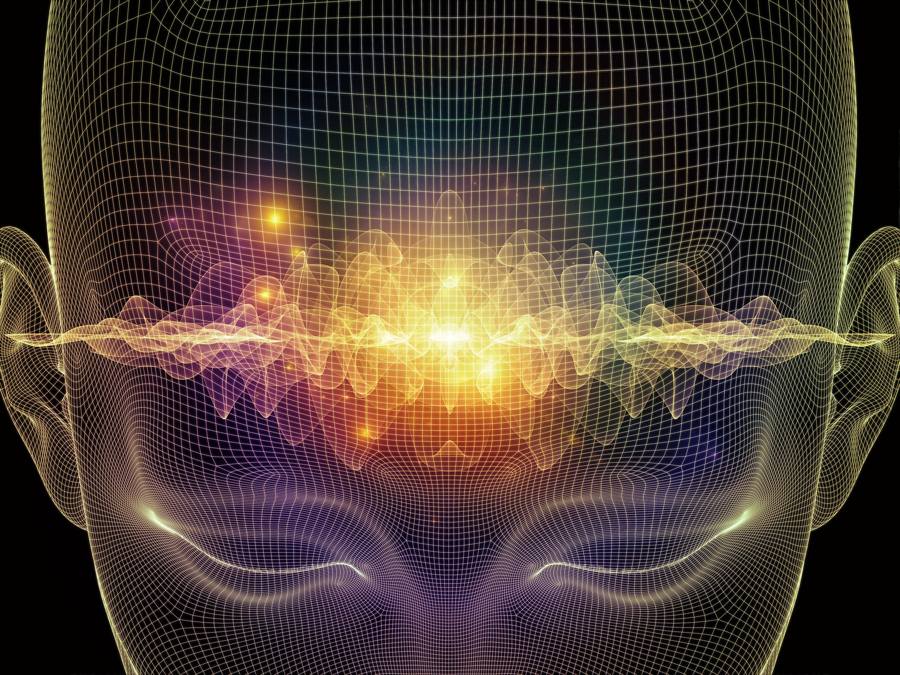 Hemi-sync, binaural beat, or sonic entrainment is, however, far more easily available. A kind of ‘auditory illusion’ occurs when two waves of different sound frequencies are channeled, one into each ear of a listener. Our brain produces a third distinct waveform, equal to the difference in frequencies, and becomes entrained to that state.
Hemi-sync, binaural beat, or sonic entrainment is, however, far more easily available. A kind of ‘auditory illusion’ occurs when two waves of different sound frequencies are channeled, one into each ear of a listener. Our brain produces a third distinct waveform, equal to the difference in frequencies, and becomes entrained to that state.
Today, binaural smartphone apps are replacing Hemi-sync CDs. Three that I have used, presented below, represent a good range of options. Many others are available.
- Ooooo is a free app that allows you to precisely customize the frequency, tone, volume, noise, and choose between mono and binaural. You can use this app alone or simultaneously listen to relaxing music from one of your phone’s playlist with the tone/beat in the background.1
- The Ultimate Brainwave is a suite of 5 apps for $10, including Brainwave, Dream, Neuro Athlete, Headache, Sharp and Altered States. These apps are more customizable, include various preset states like Convergent Thinking, Creative Thinking, and Beta Confidence Boost. They include rain, water, and atmospheric sounds and allow you to link your playlists from within each program.1
- iAwake is both an app and a service. The app is free and includes some sample biaural music, but you can also buy digital (or digital + CD) recording specifically produced for brain entrainment to play on the app.1
- Neurophone is radically different than the other tools. I almost didn’t include it because until recently it’s been unavailable. In 1958, at the age of 14, Dr. Patrick Flanagan invented the neurophone, an electronic device that transmits sound through the skin and cranial bones directly to the brain, bypassing the ears and 8th cranial nerve. It can be used alone or linked to audio via a smartphone. I bought mine, the Neo (last gen) about 10 years ago for $400. I’ve just seen the NF3 (prior gen) available online for $600-$1,200.1,2
In addition to electronic entrainment, tuning forks and singing bowls can be used to produce a similar effect. Most people find them way more fun to play and meditate with or just to experience. By entoning two distinct notes, the brain, and even more so the entire tissue field, harmonizes the frequencies internally through the fluid medium of the body. Additionally, by gradually extending the interval between strikes, the entire nervous system settles and the electromagnetic energy-field expands as it ‘reaches outward’ for the dissipating sound. Practitioners of sound healing recognize that it’s as much, if not more so, about the silence between as it is about the notes. For about $50 you can get a basic 2-tuning fork set of C & G (not the ones with weighted ends). Strike both, then wave them slowly around your head and ears, and now other areas of your body. Notice how your body responds and harmonizes the 2-notes into a third binaural beat.
BRAINWAVES — At-A-Glance
- Lambda 100-200 Hz
State: Body self-regulation, Extremely deep meditative state, True oness with everything
Use: No body, no spacetime, Undifferentiated consciousness, Melting ice around meditator, Eureka moments - Hyper Gamma 44-100 Hz
State: Extraordinary states of Unity consciousness, Still-point singular focus
Use: Exceptional information processing, compassion, and extraordinary focus, improved memory, No body, no spacetime  Gamma 36-44 Hz
Gamma 36-44 Hz
State: Peak cognitive activity, Sweeping waves from Thalmus create full-brain synchronization
Use: Sense of oneness, Active thought & peak concentration, states of intense focus in meditation, Memory recall, REM sleep, Gateway to transcendental states, Compassion- Beta 12-36 Hz
State: Awake and alert
Use: Awake and mentally alert with high levels of awareness/cognition, Problem-solving- High Beta (or Beta 3) 20-36 Hz
Associated with significant stress, anxiety, paranoia, high energy, & high arousal - Mid Beta (or Beta 2) 15-20 Hz
Alert, mentally and physically active, but not agitated, Math, Planning, High performance - Low Beta (or Beta 1) 12–15 Hz
Sensorimotor rhythm (SMR), Quiet, focused, introverted concentration, Low SMR = lack of attention ADD,
- High Beta (or Beta 3) 20-36 Hz
- Alpha 8-12 Hz
State: Deep relaxation, Present, In-the-moment, balanced awareness
Use: Relaxation, Visualization, Creativity, Super learning, Mindfulness, Calm alertness, Stress reduction, Serotonin production, TM meditation - Theta 3-8 Hz
State: Meditation, Hypnagogic and hypnopompic states (between waking and dreaming), REM Sleep, Hypnosis/trance
Use: Meditation, Intuition, Light sleep and dreaming, Hypnagogic imagery, Trance, Access to unconscious/subcosncious mind, Inner focus, Drowsiness, ESP, Zazen - Delta 0.5-3 Hz
State: Deep dreamless sleep, self-healing, Rest and rebuild
Use: Deep meditation, Deep sleep, Healing and growth, HGH & DHEA release and cortisol reduction, Pain relief, Deep trance-like state, Loss of body awareness, Access to unconscious and collective unconscious, Low-level of arousal - Epsilon 0.0-0.5 Hz
State: Extremely deep meditation, Suspended animation
Use: Suspended animation, No discernible heartbeat pulse or brain activity, Unity consciousness, No body, no spacetim
Continue reading in Body-Mind-Spirit 3: Field-Matrix
Footnote
- 1NOTE: I have no relationship with any of these companies and there are many more options available. This list is supplied as a sampling.
- 2History of the Neurophone & Dr. Patrick Flanagan’s Bio
External Resources:
- Dr. Jeffrey D Thompson, Center For Neiroacustic Research
- Emily Howlett, Heart-Brain Interactions
- Emily Sohn, Nature: Decoding the neuroscience of consciousness
- Eugene Shea, The First Credible Theory of Cognitive Neuroscience? Resolving the Mind/Brain/Behavior/Enigma
- Jeffrey L. Fannin, Understanding Your Brainwaves
- John Dupuy, iAwake Technology
- Juri Kropotov, Quantitative EEG, Event-Related Potentials and Neurotherapy
- Lawrence Weller – binauralbeatsfreak.com
- Kevin Bins, ERTAS: The Engine of Consciousness
- Mark Solms, What is “the unconscious,” and where is it located in the brain?
- NeuroHealth, The Science of Brainwaves
- Ryan O’Hare, Ayahuasca Changes Barinwaves to Vivid ‘Waking-Dream’ State
- Tara MacIsaac, Science Shows Superhuman Energy of Meditators
- Visible Body, The Human Brain: Anatomy and Function
Internal Resources:
Disclaimer:
The information featured on this site is provided for information and education purposes only and is not intended to replace the advice of your doctor or health care provider on medical and/or health-related issues.
You should not use the information on this site for diagnosis or treatment of any health problem or as a substitute for medication or other treatment prescribed by your physician or health care provider.

